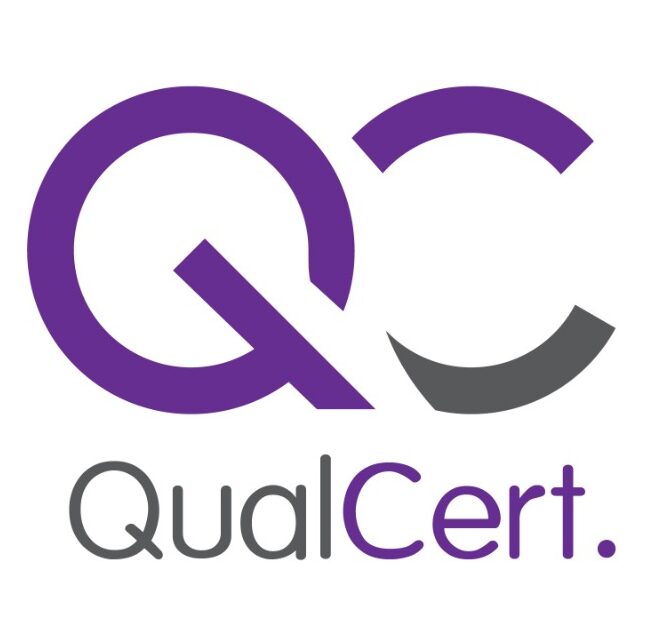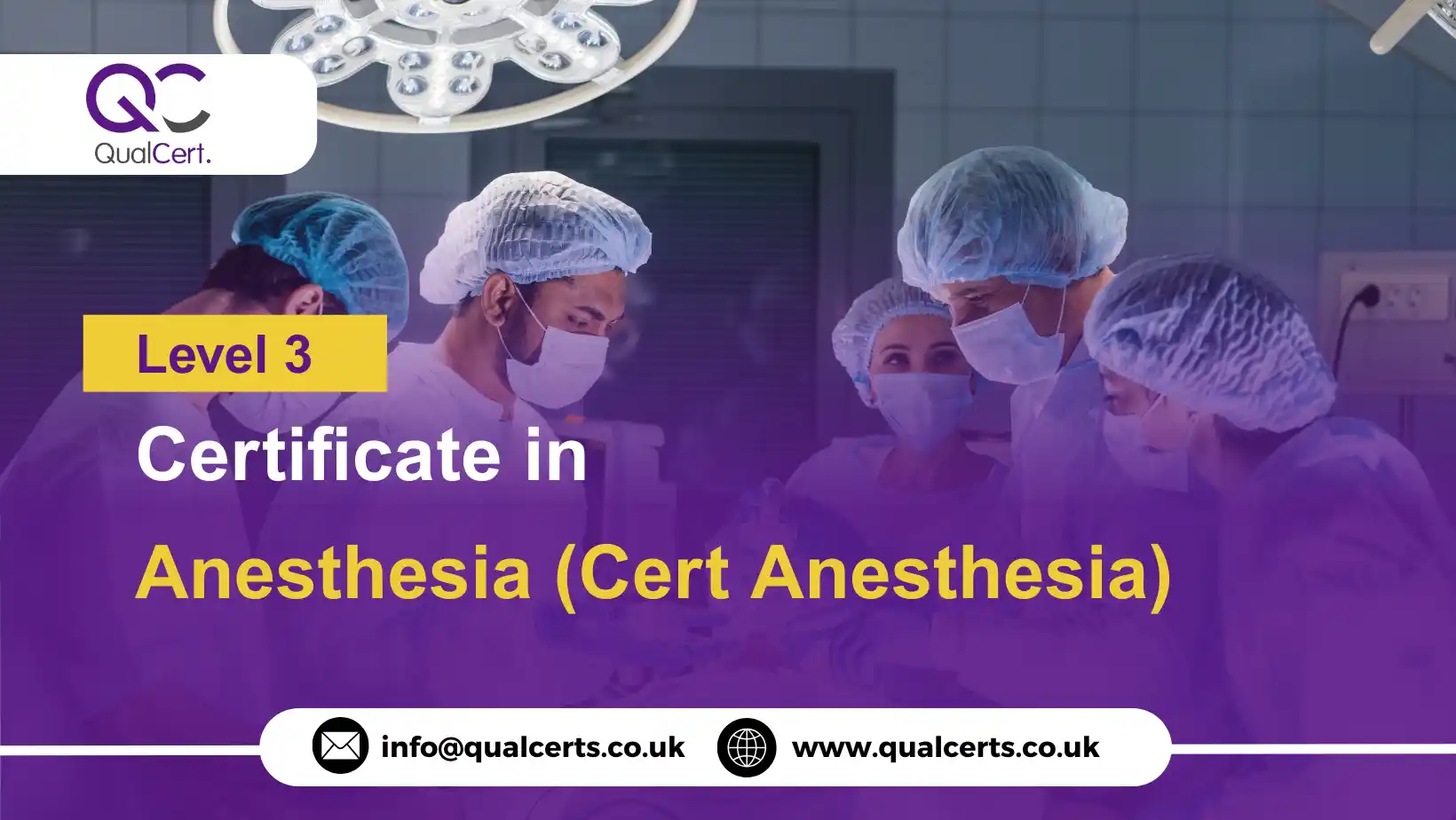The QualCert Level 3 Certificate in Anesthesia (Cert Anesthesia) is a specialised qualification designed to provide learners with a strong foundation in the principles and practices of anaesthesia. This programme has been developed to meet the growing demand for skilled professionals who can support anaesthetic teams and contribute to safe and effective patient care.
The course introduces learners to the essential concepts of anaesthesia, patient monitoring, equipment handling, and safety protocols. By completing this qualification, individuals gain the knowledge and skills required to support anaesthetists in clinical environments while ensuring adherence to healthcare standards and patient safety requirements.
This certificate is an excellent choice for those who want to develop a career in healthcare, particularly in roles supporting anaesthetists and surgical teams. The qualification provides practical and theoretical understanding, enabling learners to build confidence in working within operating theatres and other clinical environments.
Employers value this certification as it demonstrates a candidate’s commitment to professional development and their ability to work safely and effectively in high-pressure medical settings. It is also a valuable stepping stone for further studies in healthcare, anaesthesia, and perioperative care.
The QualCert Level 3 Certificate in Anesthesia not only enhances technical knowledge but also builds critical thinking, problem-solving, and teamwork skills. These qualities are vital for anyone working in healthcare, especially in fast-paced environments where patient safety is the highest priority.
The QualCert Level 3 Certificate in Anesthesia (Cert Anesthesia) equips learners with the essential skills and knowledge to contribute meaningfully within anaesthesia teams. It opens doors to rewarding career opportunities in healthcare while laying a strong foundation for further professional growth. By achieving this qualification, individuals take an important step towards making a positive impact on patient care and surgical safety.
Course Contents of QualCert Level 3 Certificate in Anesthesia (Cert Anesthesia):
The QualCert Level 3 Certificate in Anesthesia (Cert Anesthesia), offers 20 Credits, requiring a Total Qualification Time (TQT) of 100 hours, including 70 Guided Learning Hours (GLH).
| Unit Ref# | Unit Title | Credit | GLH | TQT |
| QC27084-1 | Principles of Anesthesia | 4 | 14 | 20 |
| QC27084-2 | Patient Assessment and Preparation for Anaesthesia | 4 | 14 | 20 |
| QC27084-3 | Anaesthetic Equipment and Monitoring | 4 | 14 | 20 |
| QC27084-4 | Intraoperative Support and Safety Protocols | 4 | 14 | 20 |
| QC27084-5 | Post-Anaesthesia Care and Ethical Practice | 4 | 14 | 20 |
Entry Requirements for the QualCert Level 3 Certificate in Anesthesia (Cert Anesthesia):
To enrol in the QualCert Level 3 Certificate in Anesthesia (Cert Anesthesia), learners must meet the following minimum entry requirements:
Minimum Age
- Learners must be at least 16 years of age at the time of enrolment.
- Centres may recommend learners to be 18+ if they are directly involved in clinical placements or healthcare practice.
Educational Background
- A Level 2 qualification (or equivalent) in a relevant subject such as Health and Social Care, Biology, or Science is desirable.
- Learners without formal qualifications may still be considered if they can demonstrate sufficient knowledge or commitment to healthcare through prior learning or experience.
- Basic understanding of anatomy, physiology, or healthcare settings is an advantage but not mandatory.
Experience
- No prior experience in anaesthesia is required.
- Previous volunteering, work experience, or employment in a healthcare or support role will be considered beneficial.
- Learners aiming to progress into clinical roles may need to meet additional requirements set by healthcare employers or regulatory bodies.
Language Proficiency
- Since the qualification is delivered in English, learners must demonstrate adequate language, literacy, and numeracy skills.
- A minimum of CEFR Level B2 (equivalent to IELTS 5.5 or higher) is recommended for non-native English speakers.
- Learners must be able to read and interpret healthcare terminology, write structured reports, and communicate effectively in a clinical context.
Learning Outcomes for the QualCert Level 3 Certificate in Palliative Medicine (Cert PM):
Principles of Anesthesia
- Understand the historical development and modern applications of anaesthesia
- Identify the different types of anaesthesia and their clinical uses
- Explain the role and responsibilities of the anaesthesia support team
- Recognise the importance of patient safety and ethical practice in anaesthesia
Patient Assessment and Preparation for Anaesthesia
- Conduct basic pre-anaesthetic checks and assessments under supervision
- Recognise patient risk factors and contraindications for anaesthesia
- Demonstrate knowledge of patient preparation procedures including fasting, consent, and communication
- Apply principles of infection prevention and control during pre-operative care
Anaesthetic Equipment and Monitoring
- Identify and describe the function of key anaesthetic equipment
- Demonstrate safe handling, cleaning, and maintenance of anaesthetic machines and monitoring devices
- Recognise common equipment malfunctions and report them appropriately
- Monitor vital signs and patient responses during anaesthesia using appropriate devices
Intraoperative Support and Safety Protocols
- Assist the anaesthesia team in preparing the operating theatre for procedures
- Apply safety and emergency protocols during anaesthetic administration
- Work effectively as part of a multidisciplinary surgical team
- Maintain accurate documentation and follow professional standards in intraoperative support
Post-Anaesthesia Care and Ethical Practice
- Support safe patient transfer from theatre to recovery areas
- Monitor patients during recovery and identify potential complications
- Apply principles of patient comfort, dignity, and confidentiality in post-anaesthetic care
- Demonstrate understanding of ethical issues, accountability, and professional behaviour in anaesthesia practice
The QualCert Level 3 Certificate in Anesthesia is designed for individuals who wish to develop foundational knowledge and practical skills in supporting anaesthesia and perioperative care. It is suitable for:
- Healthcare assistants and support workers seeking to progress into anaesthesia or operating theatre roles
- Individuals aspiring to work in perioperative or anaesthetic care within hospitals and clinics
- Learners aiming to build a career pathway in healthcare and progress to higher-level qualifications in anaesthesia, nursing, or perioperative practice
- Those currently working in healthcare who want to strengthen their understanding of anaesthesia and patient safety protocols
- Students with a background in health sciences who wish to specialise in anaesthesia and surgical support
- International learners interested in gaining a qualification that reflects UK professional standards in healthcare education
To deliver the QualCert Level 3 Certificate in Anesthesia, approved centres must meet the following standards to ensure high-quality teaching, learning, and assessment:
Staffing Requirements
- Tutors, trainers, and assessors must hold a relevant healthcare or anaesthesia-related qualification at Level 4 or above.
- Teaching staff should have at least two years of relevant clinical or teaching experience in anaesthesia, perioperative care, or healthcare practice.
- Assessors must hold or be working towards a recognised assessor qualification (such as TAQA or equivalent).
- Internal quality assurers (IQAs) must be appropriately qualified and experienced in both assessment and quality assurance.
Resources and Learning Materials
- Access to teaching facilities with appropriate learning resources, including textbooks, journals, and digital learning platforms.
- Availability of specialist anaesthesia equipment and simulation tools for practical demonstrations and skills training.
- Up-to-date learning materials aligned with current international healthcare and anaesthesia standards.
- Access to appropriate case studies, scenarios, and e-learning resources to support blended delivery.
Facilities
- A classroom or training environment that supports interactive and practical learning.
- Access to simulation labs or healthcare settings for practical demonstrations of anaesthetic equipment, monitoring, and patient preparation.
- Safe storage and maintenance facilities for clinical equipment and training tools.
Assessment Requirements
- Centres must design assessments that are valid, reliable, and aligned with the qualification’s learning outcomes.
- Assessment methods may include written assignments, case studies, practical demonstrations, reflective journals, and oral questioning.
- Practical components must be assessed in a controlled and supervised environment to ensure learner competence and patient safety awareness.
- Internal quality assurance processes must be in place to ensure fairness and consistency in assessment.
Additional Requirements
- Centres must comply with all health, safety, and ethical guidelines relevant to healthcare and training delivery.
- Learners must have access to appropriate academic and pastoral support throughout their studies.
- Centres must maintain accurate records of teaching, assessment, and learner progress in line with awarding body requirements.

